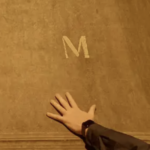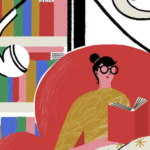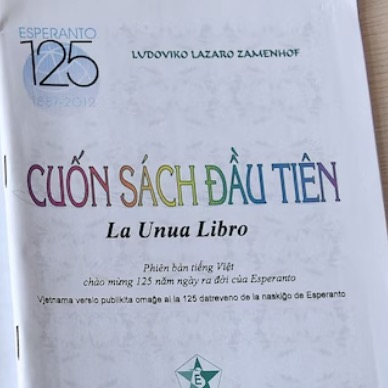AJ Four Ways: Text Only (by date) | headlines only
DANCE
IDEAS
- Don’t Blame Netflix For The End Of Cinema

If you must blame anyone, blame the Boomers, and Gen-X. “One lesson of 2025 may be that only younger people – children in particular – can save cinemas from imminent annihilation.” – Irish Times
- Gary Graffman, Child Piano Prodigy Turned Renowned Teacher And Administrator, Has Died At 97

“In 1964 Mr. Graffman canceled a booking in Jackson, Miss., after learning that the house would be segregated, leading other prominent classical artists to publicly announce that they would no longer perform in segregated halls.” – The New York Times
- See Roofman, Or At Least Read Slate’s Movie Club About Everything In Film This Year

Choosing only one post from these annual critic chats is a challenge, but this 10th in the series features the weirdly, deeply American Roofman (though for the sake of improving both brain and watchlist, read through the entire discussion). – Slate
- Apparently, One Can Insure The Bayeux Tapestry

Does £800 million seem like enough? Hm. – The Guardian (UK)
- This Movie Season, Sad Art Dad Is Finally Being Held Responsible For His Actions

“Does the Sad Art Dad regret his choices? Is making great art—which, in these films, has a capacious, allegorical quality—worth ruining your relationship with your kids?” – The Atlantic
ISSUES
- Apparently, One Can Insure The Bayeux Tapestry

Does £800 million seem like enough? Hm. – The Guardian (UK)
- The ‘Craftivists’ Using Fiber Arts To Fight Back Against The Current US Regime

“For some fiber artists, craft is inherently political. ‘Creating in a time of destruction and chaos, that is resistance in and of itself,’ said Downey. … But she thinks one of the other successes of craftivism is that “‘it centers joy’” – The Guardian (UK)
- The London Eye’s Architect Has Designed A Renewable Energy AI Source

The tidal power station “would curve from Minehead to Watchet and use 125 underwater turbines to harness the power of the second-highest tidal range in the world” – and also become a race track for cyclists. – The Guardian (UK)
- Designing A Mostly Happy, Hippie Sci-Fi Apolcalypse

For instance, in Pluribus, “the music was designed to explore the tension between the pain of individuality and the comfort of surrender.” – Fast Company
- Ancient Pharaoh’s Boat Is Being Reassembled In Public View

The vessel belonged to King Khufu (aka Cheops), builder of the Great Pyramid — near which the boat was discovered in 1954 and excavated in 2014. The 137-foot-long structure, made of 1,540 wooden pieces, is being reassembled in the exhibition hall of the new Grand Egyptian Museum, which opened earlier this year. – AP
MEDIA
- Don’t Blame Netflix For The End Of Cinema
If you must blame anyone, blame the Boomers, and Gen-X. “One lesson of 2025 may be that only younger people – children in particular – can save cinemas from imminent annihilation.” – Irish Times
- Nazis Plundered 175,000 Church Bells Across Europe, Changing The Sound Of Those Countries Forever
More than 150,000 were taken, and never returned, often turned into ammunition or taken to a Glockenfriedhof, or bell cemetery. The sliver of silver lining: “A postwar ‘bell quality race’ … led to major advances in campanology.” – The New York Times
- The Books, Recordings, Culture Entering Public Domain January 1
Under U.S. law, the copyright on thousands of creations from 1930 — including films, books, musical compositions and more — will expire at the stroke of midnight on Jan. 1, 2026, meaning they will be free to use, share and adapt after nearly a century. – NPR
- The World’s Supply Of Frankincense Is Running Low
Like maple syrup, frankincense is harvested by tapping the sap of a tree, in this case several varieties of the Boswellia tree, which grows in the Horn of Africa. Those trees — all wild; for whatever reasons, nobody farms Boswellia — are threatened by climate change, pest infestation, local conflict, and, above all, overharvesting. – BBC
- Folks Lined Up Around The Block For What Might Be Philly’s Last-Ever Wanamaker Light Show
“They came to the Wanamaker Building on Christmas Eve … out of love for the ghosts of Christmas past — and to share a cherished tradition with children who had yet to see (it). They came because it’s going away, and no one knows for sure when it will be back.” – The Philadelphia Inquirer (MSN)
MUSIC
- The World Is In A Reading Slump. These Podcasts Might Help
Reading is down “thanks in large part to the number of digital distractions competing for our limited attention.” Ironically, these podcasts might help fix that. – The New York Times
- Why Canadian Fiction Needs To Stop Talking To Itself
In Canada, the literary world tends to be inward-looking. It’s obvious why. For three-quarters of a century, the official position has been that if Canadians don’t support Canadian culture, no one will—and that some stage management is required. – The Walrus
- Yet-To-Be-Published “Tupperware Erotica” Novel Sparks Bidding War For TV Rights
“Wet Ink, a novel (about a 1960s housewife using Tupperware parties to smuggle erotic stories) by the 33-year-old London-based author Abigail Avis, is not scheduled to be published until the spring 2027, but industry insiders said a fierce auction between six major production companies had already taken place.” – The Guardian
- Your Spotify Wrapped Doesn’t Really Know You. But Your Reading Does
Listening to music can be a passive experience — one enjoyed in tandem with folding laundry, or driving a car. To really learn about ourselves and how our year has been, we might want to turn elsewhere, to a habit with more intention. I’m talking, of course, about reading. – Los Angeles Times
- 2025 Was A Very Tough Year For Libraries. These Are The Top Stories
Federal funding, the freedom to read, perpetual or temporary access to print and digital collections, and AI innovations saw new and unpredictable developments on a weekly basis. – Publishers Weekly
PEOPLE
- Don’t Blame Netflix For The End Of Cinema
If you must blame anyone, blame the Boomers, and Gen-X. “One lesson of 2025 may be that only younger people – children in particular – can save cinemas from imminent annihilation.” – Irish Times
- Gary Graffman, Child Piano Prodigy Turned Renowned Teacher And Administrator, Has Died At 97
“In 1964 Mr. Graffman canceled a booking in Jackson, Miss., after learning that the house would be segregated, leading other prominent classical artists to publicly announce that they would no longer perform in segregated halls.” – The New York Times
- See Roofman, Or At Least Read Slate’s Movie Club About Everything In Film This Year
Choosing only one post from these annual critic chats is a challenge, but this 10th in the series features the weirdly, deeply American Roofman (though for the sake of improving both brain and watchlist, read through the entire discussion). – Slate
- Apparently, One Can Insure The Bayeux Tapestry
Does £800 million seem like enough? Hm. – The Guardian (UK)
- This Movie Season, Sad Art Dad Is Finally Being Held Responsible For His Actions
“Does the Sad Art Dad regret his choices? Is making great art—which, in these films, has a capacious, allegorical quality—worth ruining your relationship with your kids?” – The Atlantic
PEOPLE
- Don’t Blame Netflix For The End Of Cinema
If you must blame anyone, blame the Boomers, and Gen-X. “One lesson of 2025 may be that only younger people – children in particular – can save cinemas from imminent annihilation.” – Irish Times
- Gary Graffman, Child Piano Prodigy Turned Renowned Teacher And Administrator, Has Died At 97
“In 1964 Mr. Graffman canceled a booking in Jackson, Miss., after learning that the house would be segregated, leading other prominent classical artists to publicly announce that they would no longer perform in segregated halls.” – The New York Times
- See Roofman, Or At Least Read Slate’s Movie Club About Everything In Film This Year
Choosing only one post from these annual critic chats is a challenge, but this 10th in the series features the weirdly, deeply American Roofman (though for the sake of improving both brain and watchlist, read through the entire discussion). – Slate
- Apparently, One Can Insure The Bayeux Tapestry
Does £800 million seem like enough? Hm. – The Guardian (UK)
- This Movie Season, Sad Art Dad Is Finally Being Held Responsible For His Actions
“Does the Sad Art Dad regret his choices? Is making great art—which, in these films, has a capacious, allegorical quality—worth ruining your relationship with your kids?” – The Atlantic
THEATRE
VISUAL
- Why It Matters That We Can Interpret Symbols In Art And Literature
“Something profound is lost when we reject the symbolic, that well-spring of human communication since an Australopithecus some three-million years ago found a pebble on the South African savannah and held onto it because the rock happened to look like a human face.” – LitHub
- In Praise Of The Intelligence Of Aphorisms
Aphorisms are different. They are the antithesis of the half-baked hot take and nothing like the machine-made flattery that’s now permeating so many informational environments. A platitude is a placebo for the mind; an aphorism is a wake-up call. – The Atlantic
- Are Our Grandparents Being Captured By Their Phones?
“I am constantly begging my mom to put her phone down, every time I see her she is just mindlessly scrolling. I swear her attention span is GONE,” one person wrote. – The Atlantic
- AI Voice Clones Are Amazing. But Also Troublesome In Defining Identity
Technology may blur boundaries, but it also reveals who holds the power. When male creators use AI to simulate female voices and personas, are they expanding artistic possibilities or perpetuating a new form of gender appropriation, ventriloquism and misogyny? – The Conversation
- We Know So Little About How Our Senses Interact. Why Does Music Make Food Taste Different?
When we sit down for a meal, all of our senses come to the table, and some of them have unexpected effects. Heavier cutlery, for example, makes a meal more pleasurable, he has found, and flavors in space are often duller. Foods that sound better taste better, too. – Nautilus



















